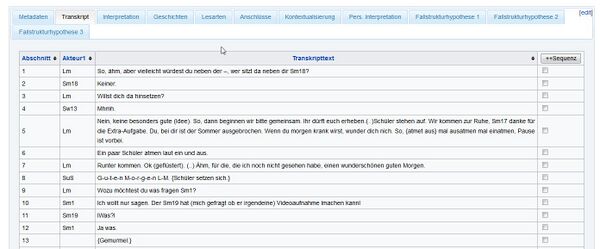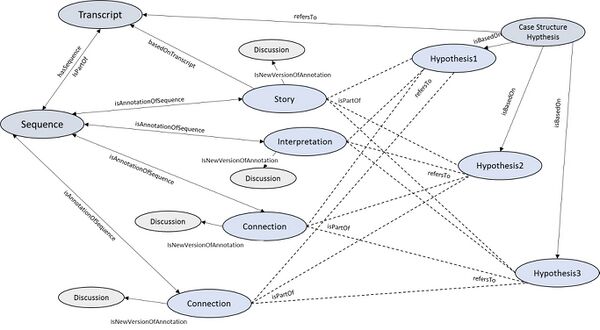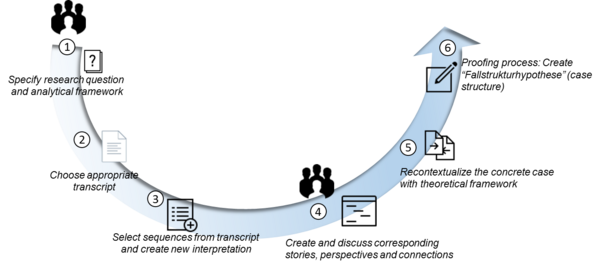Documentation/OHITool: Unterschied zwischen den Versionen
(→Usage) |
(→Usage) |
||
| Zeile 60: | Zeile 60: | ||
In order to start a new transcript, please call special page '''Formular:Erhebungsmaterial_Metadaten''', if your wiki is in German, otherwise call '''Form:Erhebungsmaterial_Metadaten''' (for English). After you collect the transcript data and save the formular, you should see the following interface: | In order to start a new transcript, please call special page '''Formular:Erhebungsmaterial_Metadaten''', if your wiki is in German, otherwise call '''Form:Erhebungsmaterial_Metadaten''' (for English). After you collect the transcript data and save the formular, you should see the following interface: | ||
| − | [ | + | [[File:OHITool1.jpg|600px]] |
An explanation for abbreviation used by tool is here (German version): [[Documentation/OHITool/Help|Help]]. | An explanation for abbreviation used by tool is here (German version): [[Documentation/OHITool/Help|Help]]. | ||
Version vom 14. Februar 2018, 13:58 Uhr
OHI Tool
The OHITool extension is an extension used in a Virtual Research Environmen based on Semantic MediaWiki and allows reaserchers to carry out Qualitative Analysis of social interaction using Objective Hermeneutical methodology. The extension particularly has been tailored to be use for classroom interaction analysis.
It was developed within the research project SMW-CorA and funded by the DFG.
Download
Download the zip file and extract it to the folder of your MediaWiki installation, unter the folder extensions.
Installation
Vorlage:TNT This extension requires MediaWiki, Result Formats and Tabs to be installed first.
Please edit the file LocalSettings.php and add the following line:
require_once( "$IP/extensions/OHI/OHI.php" );
The extension will be installed under the Section Other special pages of Special:SpecialPages, under the name Objective Hermeneutic Interpretor Tool.
Usage
This is a brief introduction on how to use the OHITool. A more detailed guide will appear on this page in the near future.
Important. After the installation, in the extension folder, there is a folder OHI/resources/templates. A .XML file contaning templates, forms and semantic properties could be automatically created using Special:Import procedure of MediaWiki. The import will create also a complet exaple of a transcript, in the main namespace, under the Neu_Ethik_Klasse6_Fremdsein_apaek02152 name.
In order to start a new transcript, please call special page Formular:Erhebungsmaterial_Metadaten, if your wiki is in German, otherwise call Form:Erhebungsmaterial_Metadaten (for English). After you collect the transcript data and save the formular, you should see the following interface:
An explanation for abbreviation used by tool is here (German version): Help.
List of Templates and Forms
Templates
- Erhebungsmaterial Metadaten
- Extension DPL
- Fallstrukturanalyse
- ShowText
- Show Metadata
- StoreFallstrukturanalyse
- StoreFallstrukturhypothese
- TextAnnotation
- TextAnnotationLevel2
- TextAnnotationLevel3
- TextAnnotationNew
- Transkript
- Transkript kurz
- Zeige Metadata
Forms
- Erhebungsmaterial Metadaten
- Erhebungsmaterial Metadaten 2
- Fallstrukturanalyse
- Linkliste
- Medien
- TextAnnotation
About Objective Hermeneutic method
For an extensive information about Objective Hermeneutic method, please consult [].
In the following picture we present the ontology of classroom interaction:
Also, the researcher will follow the Objective Hermeneutic protocol, as in the picture:
You may also consult the presentation of the talk given at the OpenSym'17 conference in Galway, Ireland:
Known issues
- This tool is usually required in German space, due the fact that it was a genuine German idea. This is the reason that properties, templates
and interface is in German. For the next version, we plan to have an English version also.
- If you find a bug, please report it on the discussion page.



